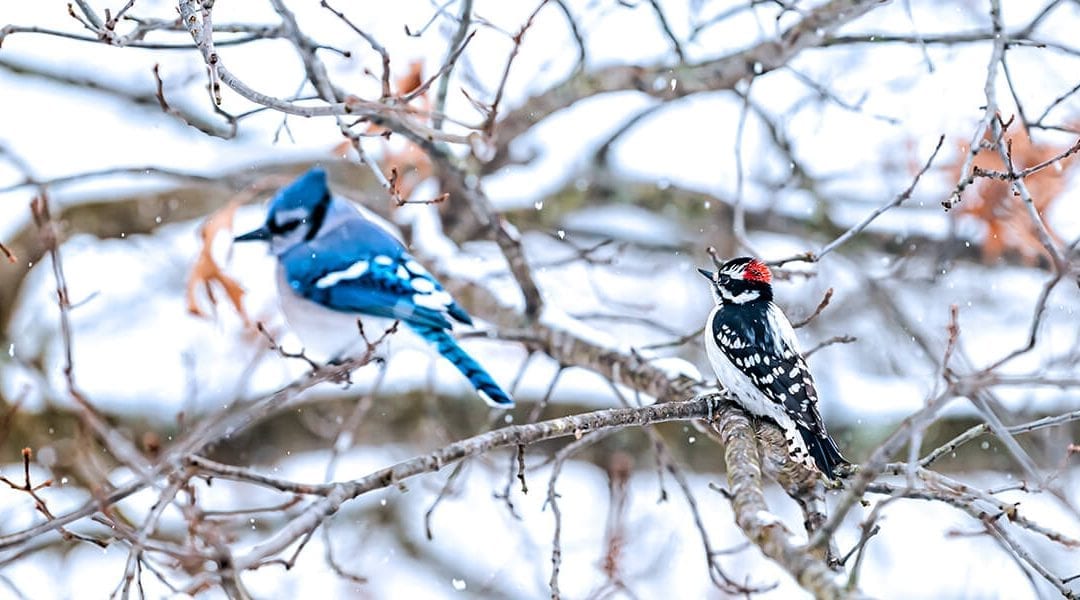Have you been admiring flickers, orioles, and warblers in your garden this summer? Maybe you planted tall trees for bird habitat or attracted them with sunflowers, berry shrubs, and native flowers. Some migratory birds have left for warmer climes by now, but many more northern species come to overwinter here, joining the woodpeckers, cardinals, and goldfinches that stay year-round. If you’re looking to attract these feathered friends to your yard, check out this guide to winter bird feeders!
The benefit of hanging feeders is more for us, not the birds: they give us a way to create relationships with local wildlife.
Why Feed Birds?
Some people think that feeding birds helps them survive the winter. The truth is that most birds are capable of finding food and enduring cold weather without our help. What’s more important is the bird habitat we grow in our yards and gardens, like planting evergreens for nesting. Feeders may help them buck extreme cold spells, but in most cases, all of the birds that cannot handle Illinois winters have flown south by now. The benefit of hanging feeders is more for us, not the birds: they give us a way to create relationships with local wildlife. Even though birds can find food elsewhere, they will still come to enjoy our offerings. And those visits are precious moments when we can observe and learn about these wonders of the sky.
Common Types of Bird Feeders
If you want to invite birds to your yard, which bird feeder should you choose? Here are profiles of the most popular kinds.
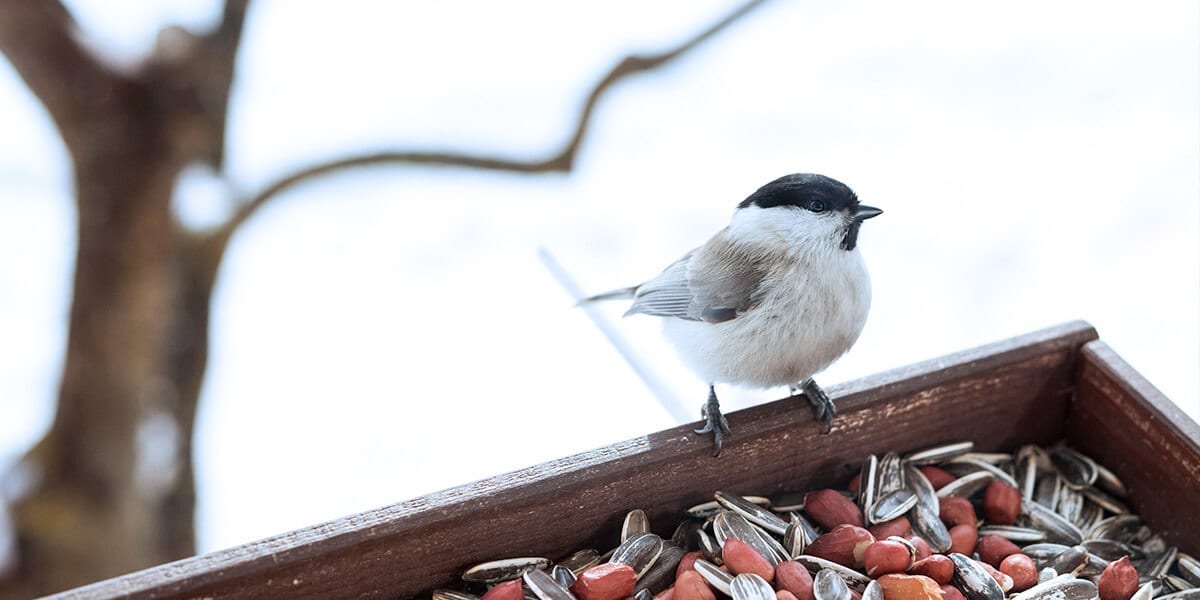
Tray Feeders
The simplest type is an open tray where you can sprinkle nuts or seeds. These attract the widest range of birds, as no acrobatics are required to access the meal. You might attract anyone from mourning doves, house sparrows, or starlings. If you put it close to the ground, you may entice ground feeding birds like dark-eyed juncos.
The downside to a tray is that the seeds can easily get wet and moldy, becoming a hazard for the fliers you wish to befriend. Plus, they can attract squirrels and raccoons. To reduce spillage, choose a tray with a mesh bottom so water and bird droppings can pass through. But even with that, you should only serve one or two day’s worth of food at a time to keep the cuisine fresh.
House Feeders
House feeders are shaped like birdhouses, except instead of an interior room, they have a stock of seeds behind plastic panels. The seeds slide out onto a feeding perch, where birds can nibble on them. The roof on the house both protects the food from moisture and gives it some charm. If any seeds get wet on the perch, mold can spread up into the main store. When that happens, no problem: just dump out the seeds, clean the birdhouse, and restock.
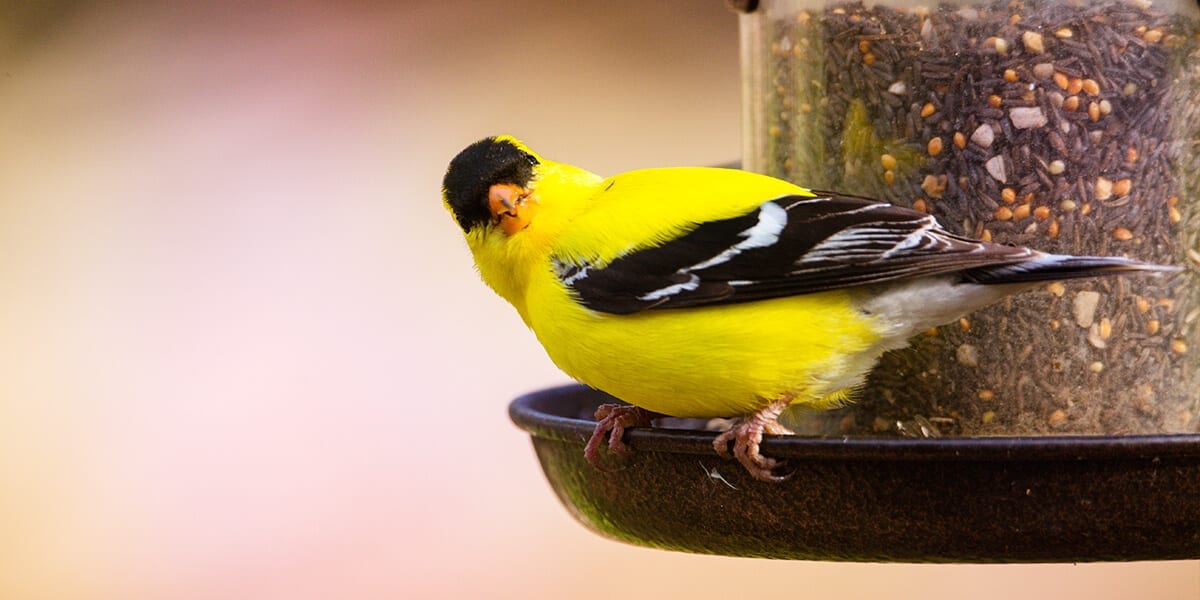
Tube Feeders
Tube feeders are similar to a house feeder, except they have a cylindrical shape. Their elegant design is both pleasing and practical. It protects the food from the weather and gives you a better sightline of feeding birds. Depending on the shape of the feeding ports, they might exclude larger species like jays and instead favor visits from sparrows, finches, and chickadees, among others. Moisture can sometimes creep in through the feeding ports, but you’ll find tube feeders very easy to clean.
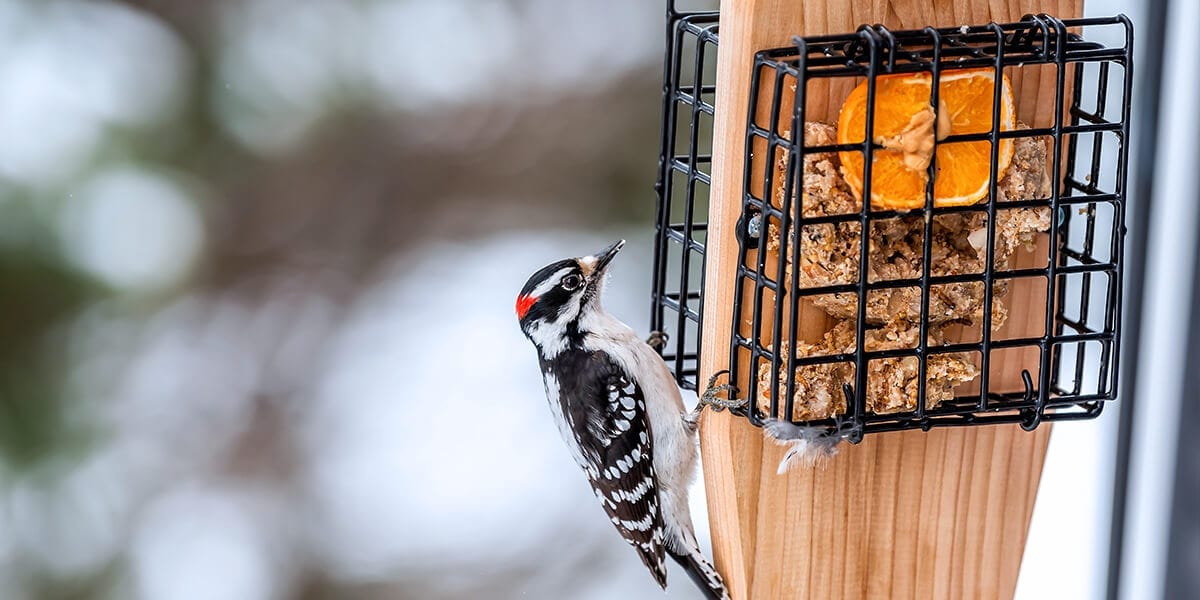
Suet Cage
A suet cage is not going to win the award for the most beautiful feeder. In essence, it’s a cage box with a piece of rendered animal fat inside of it. But it will attract birds, both big and small. They are easy to mount onto the trunk of a tree or fence post. Sometimes starlings might swarm them and make a quick meal of the fat. If that’s a problem, or if bigger birds are discouraging little ones, you can set up the cage on the underside of a piece of wood. This position favors perching birds and woodpeckers that can feed upside down while excluding starlings and corvids. In the heat of summer, suet can melt, but it will stay solid in winter, keeping the cage relatively mess-free.
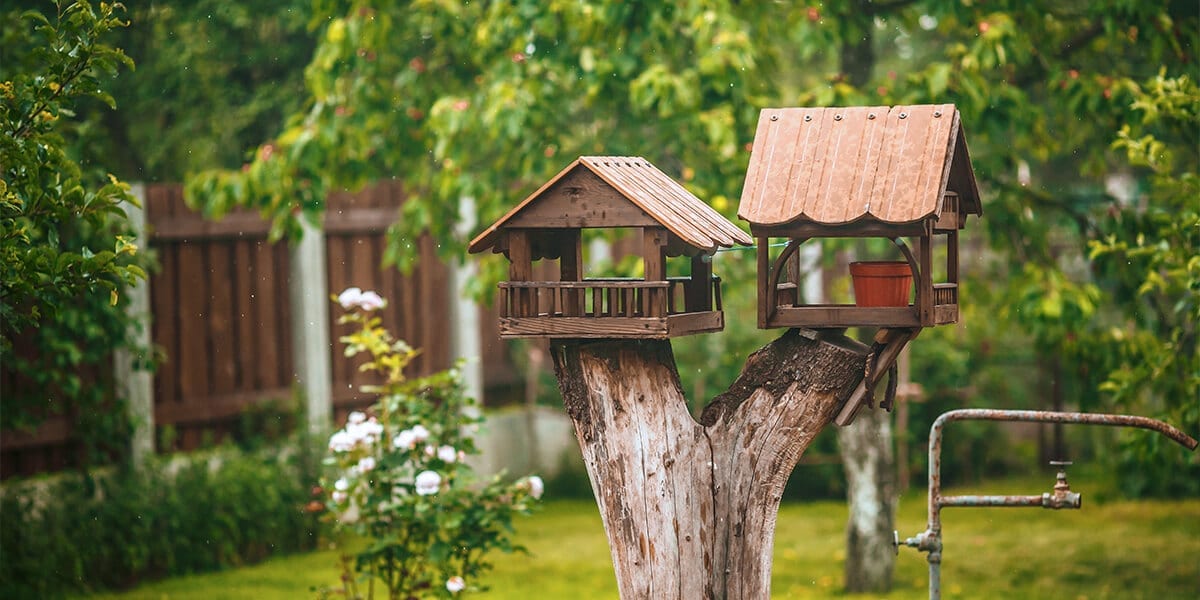
The Best Location for Bird Feeders
A feeder should be visible to the birds, visible to you, and in a spot that’s away from predators like house cats or hawks. Proximity to glass is also a concern. You don’t want to attract them with food, only to have them hurt themselves on your windows. If you think your windows are a hazard, keep your feeder closer than 3 feet, so the birds can’t build enough momentum for a crash, or more than 30 feet away. If that’s not possible, you can add decals or streamers to make your windows visible.
Birding is one of the great pleasures of winter. Not only does it give you a break from the news, but it gives you an opportunity to learn about wildlife. Because birds see the landscape from the sky, they can easily spot predators, other animals, or interesting events in the forest or neighborhood below. If you watch birds closely, you may begin to pick up signs on other animal, insect, and plant activity around you. Birds are touchstones to the wild world that is, often without our knowing, happening right in our own neighborhoods. We can begin to participate in that world by growing biodiverse gardens, and in winter, by giving birds a few treats with a feeder.
Our garden centers have bird feeders and everything you need to attract winged friends to your yard. Pay us a visit to begin your winter birding!
ADDITIONAL INFORMATION:
Birdwatching and Bird Training 101. ????
Bird Video
Platt Hill Nursery is Chicago’s premier garden center and nursery.

